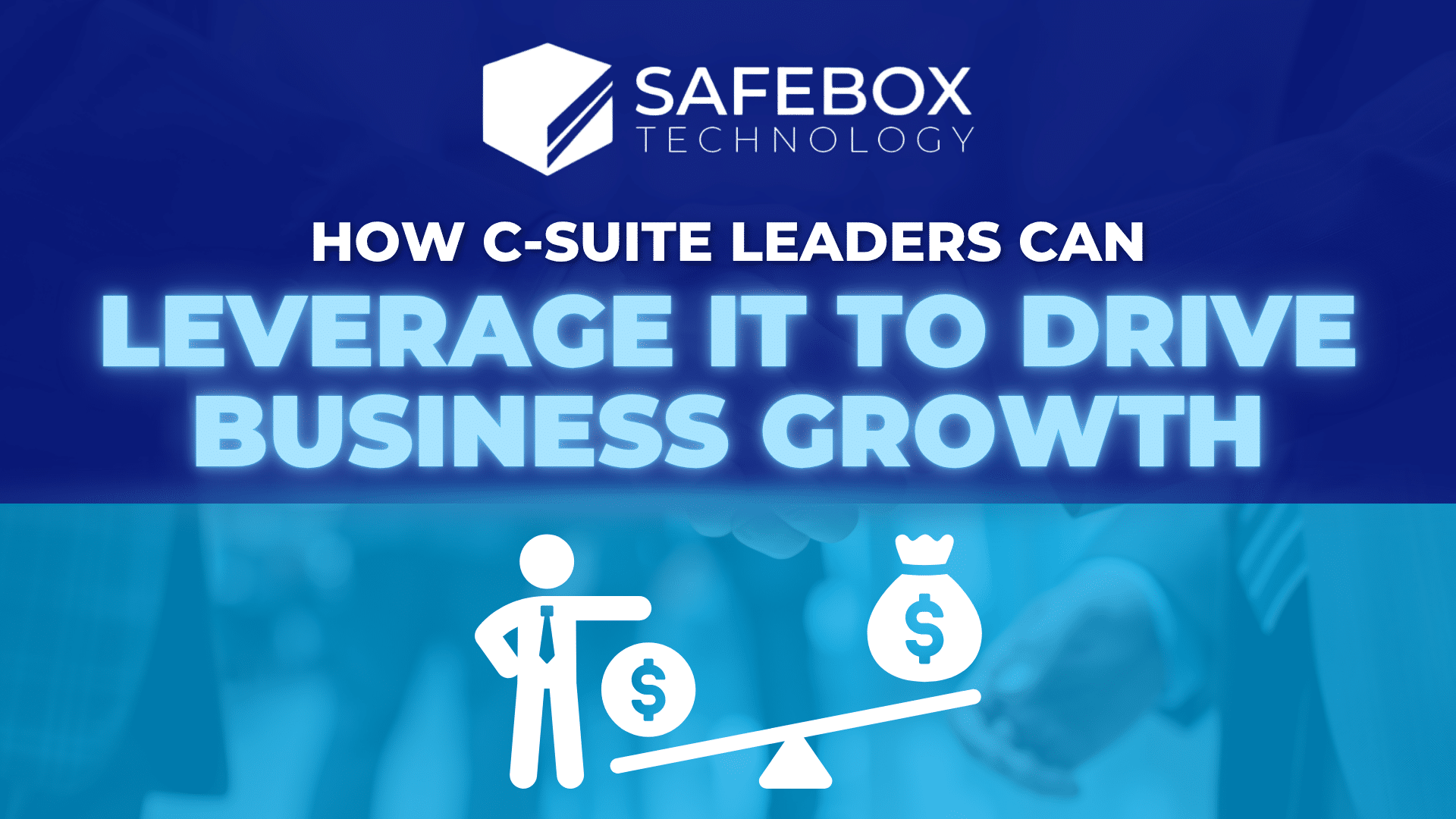C-Suite Executives should place IT at the forefront of their discussions about long-term strategy, even though it might not be their initial focus. Executive IT strategy now functions as a fundamental force that drives market expansion, innovation cycles and operational efficiency. It’s not just about keeping the lights on; it’s about leveraging technology for business growth in measurable, sustainable ways.
Whether you’re a CEO focused on competitive advantage, a CFO seeking better forecasting accuracy, or a COO optimizing workflows, your IT decisions can accelerate or stall your company’s momentum. In the hands of strategic leadership, IT becomes a growth engine, not a cost center.
Digital Transformation Is a Leadership Imperative, Not Just an IT Project
Digital transformation isn’t merely about software upgrades or cloud adoption; it’s about redefining how your business delivers value. According to McKinsey, companies that embed digital grew revenue 3.2% faster annually than their peers over five years
This shift demands more than technical execution. It requires C-Suite Executives to envision how IT supports broader business objectives, from customer experience to M&A integration. When IT is considered a strategic partner rather than a support function, it becomes central to business transformation.
The Strategic Role of the CIO: More Than Just “Keeping the Systems Running”
The CIO position in modern boardrooms has evolved from a technical leader to an innovation catalyst. 63% of technology leaders surveyed by Deloitte now report directly to the CEO and are personally involved in growth-related decisions.
This influence increase means the CIO’s insights should inform everything from new revenue models to customer personalization strategies. Forward-thinking CIOs work with other C-level executives to make IT strategies that help the C-suite make decisions. They do this by investing in automation, AI, cloud services, and data platforms to find new ways to make money.
For example, a retail COO working closely with the CIO to integrate AI-powered inventory forecasting. This alignment doesn’t just reduce waste. It improves margins and enhances customer satisfaction. That’s leveraging technology for business growth, not just supporting operations.
Data-Driven Decisions Start with Executive Vision
Modern businesses are awash in data, but insights don’t emerge by accident. It takes a deliberate executive IT strategy to unify systems, eliminate silos, and ensure decision-makers have real-time access to accurate analytics.
The research by Gartner Inc. shows that 70% of organizations will transition from big to small and wide data by 2025 to enhance analytics capabilities.
The responsibility to bridge this gap belongs to the C-suite leadership. Executives need to invest strategically in infrastructure and talent because having data alone is insufficient to generate meaningful action. Organizations should consider funding modern data warehouse infrastructure and hiring chief data officers and machine learning models that enhance forecasting and personalization capabilities.
From Risk Mitigation to Innovation Enablement
Cybersecurity, compliance, and disaster recovery are crucial pillars of IT governance, but they’re only half the story. The real power of modern IT lies in its ability to unlock new opportunities.
Think of how a manufacturing CEO, concerned with supply chain resilience, partners with IT to implement IoT sensors that deliver real-time equipment diagnostics. Or how a CFO embraces predictive analytics to improve budgeting accuracy and identify underperforming assets. These aren’t back-office upgrades; they’re competitive maneuvers shaped by IT for business growth.
By proactively embracing the right technologies, C-Suite Executives can outpace competitors who are still reactive. IT becomes a means of testing new ideas faster, iterating on customer feedback, and entering new markets with less friction.
Culture Change Begins at the Top
Technology alone doesn’t drive growth. People do. Cultural alignment is one of the most overlooked aspects of a successful executive IT strategy. Your digital investments stall if teams don’t buy into new systems or lack the training to use them.
That’s why the C-suite must champion change, not just sponsor it. Leaders must communicate why certain technologies matter and how they connect to personal goals, team KPIs, and customer success. A CEO who uses dashboards, a COO who embraces automation in team meetings, or a CFO who engages in AI-driven planning tools sets the tone for adoption.
Final Thoughts: Strategic IT as the C-Suite’s Growth Multiplier
We’re past the point where IT was considered a separate domain for tech teams alone. Today, IT is a strategic asset that supports everything from revenue acceleration to operational resilience. For C-suite executives, aligning with a visionary CIO and investing in IT strategies for C-suite transformation can define leaders from laggards.
The question isn’t whether to invest in technology but how to structure and lead that investment to create measurable business value.
Ready to Build Your Executive IT Strategy?
At Safebox Technology, we partner with executive teams to help them execute transformations with confidence and security. We assist C-suite leaders by developing strategic technology plans and extracting immediate data insights that transform IT into a business growth accelerator. Our team stands ready to help you achieve your vision of leveraging technology for business growth today and into the future.

